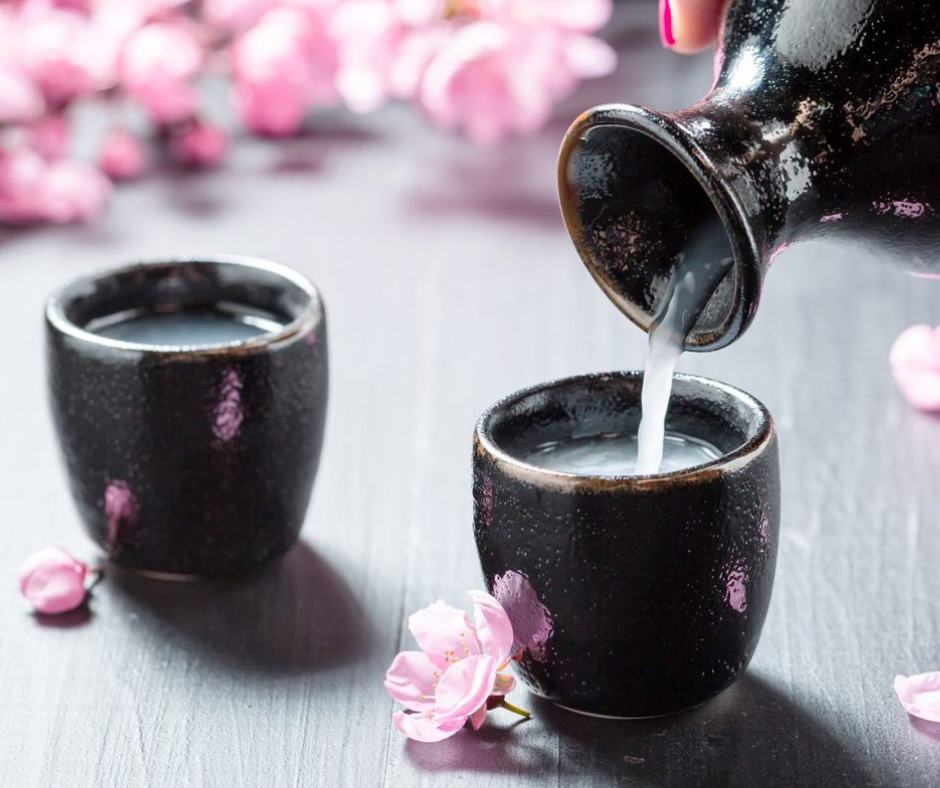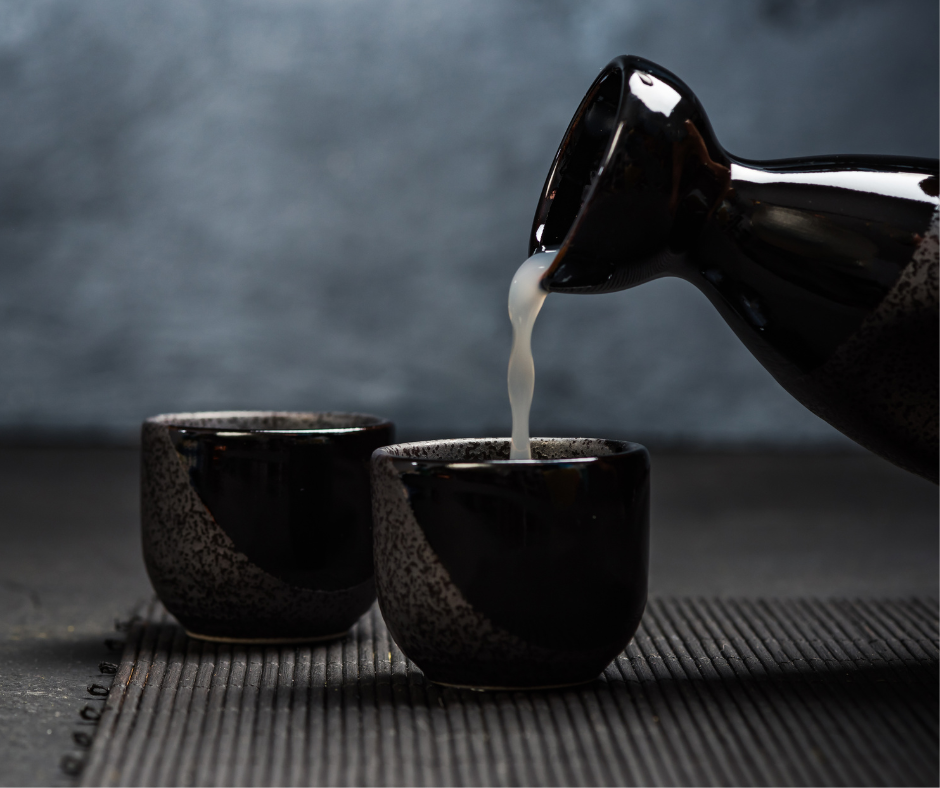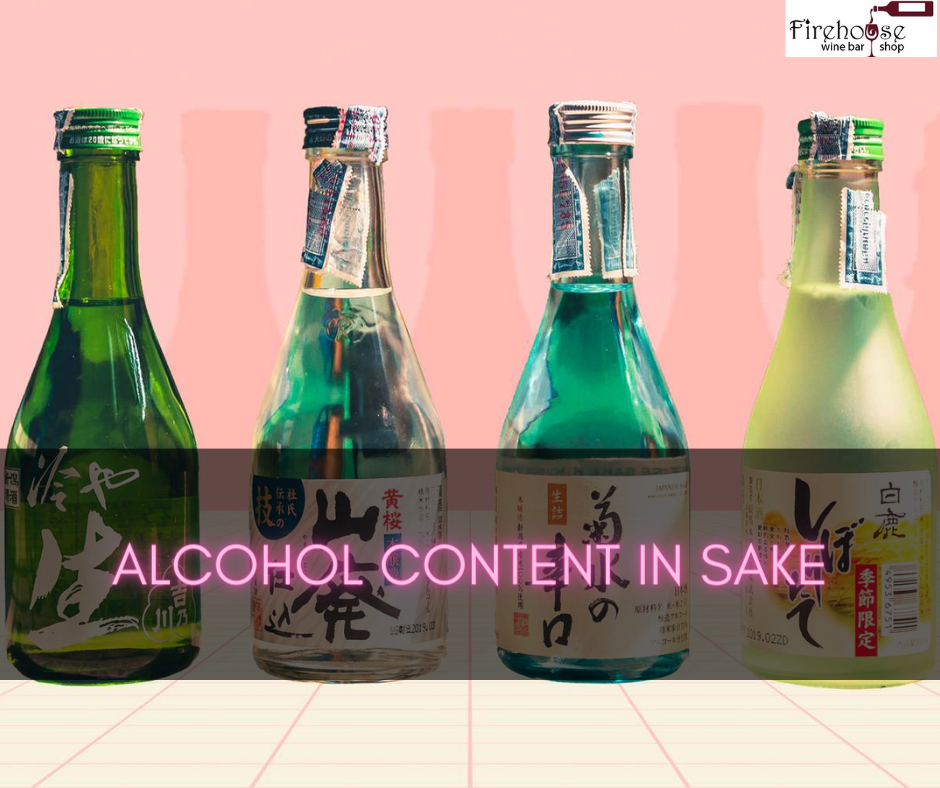Introduction
With its rich history and cultural significance, Sake has gained popularity in recent years beyond Japan. As a Japanese rice wine, it offers a unique drinking experience and is enjoyed by many worldwide. However, one aspect that can sometimes be confusing to sake enthusiasts is the Alcohol Content in Sake.
What Is Sake?
Sake, known as nihonshu, is a traditional Japanese alcoholic beverage made from fermented rice. Unlike other alcoholic beverages, such as beer or wine, which are made through the fermentation of sugars into ethanol, Sake undergoes a brewing process similar to beer. The rice is polished to remove the outer layers, and the starch inside is converted into sugar and fermented into alcohol. It is important to understand that Sake is not distilled, which means it has a lower alcohol content compared to spirits like vodka or whiskey.
Importance Of Understanding Alcohol Content In Sake
Understanding the alcohol content in Sake is crucial for several reasons. First and foremost, it allows you to gauge the strength of the Sake and make informed decisions about your drinking experience. Some people prefer a lighter sake with a lower alcohol content, while others enjoy a more robust and flavorful sake with a higher alcohol content. By knowing the alcohol percentage, you can select the Sake that matches your taste preferences.
Additionally, understanding the alcohol content in Sake helps you to pace yourself when drinking. Sake, like any alcoholic beverage, can have varying effects on individuals depending on the alcohol content. Awareness of the alcohol’s strength allows you to moderate your consumption and enjoy the Sake responsibly.
It’s worth noting that the alcohol content in Sake can range from around 12% to 20%. However, there are exceptions, such as premium sake varieties called “genshu,” which can have alcohol content above 20%. These sake types tend to have bolder and stronger flavors.
In conclusion, demystifying the alcohol percentage in Sake is essential for sake enthusiasts. It empowers you to choose the Sake that suits your preferences and enables responsible drinking. So, next time you explore the world of Sake, pay attention to the alcohol content and savor the unique flavors of this beloved Japanese beverage.

Understanding Alcohol Content In Sake
If you are a sake enthusiast or someone looking to try this traditional Japanese rice wine, understanding the alcohol content is essential. Sake’s alcohol percentage can vary, and knowing what to expect before indulging in a bottle is important.
Average Alcohol Content Of Sake
Typically, Sake has an alcohol content ranging from 15% to 20%. However, there are exceptions to this range, as some sake varieties can have as little as 5% alcohol or as high as 23% or more. The alcohol content is determined during fermentation, where yeast converts the sugars in rice into alcohol. The longer the fermentation process, the higher the alcohol content.
Comparing Sake Alcohol Content With Wine And Beer
When comparing Sake’s alcohol content with other alcoholic beverages, it falls somewhere between wine and beer. Wine usually has an alcohol content ranging from 12% to 15%, while beer typically contains around 4% to 6% alcohol.
The brewing style and the specific type of Sake can also influence Sake’s alcohol percentage. For example, Junmai sake tends to have a higher alcohol content than Honjozo or Tokubetsu Honjozo sake. Additionally, some breweries produce specialty sake with fortified alcohol content, known as genshu. These sakes can have an alcohol content of around 18% to 20% or higher.
It’s important to be mindful of the alcohol content in Sake, as it can affect your enjoyment and the overall experience. Higher alcohol content sake may have a stronger flavor and more pronounced aroma than lower alcohol varieties. If you prefer a milder taste, seeking out sakes with lower alcohol percentages would be more suitable.
In conclusion, understanding the alcohol content in Sake allows you to make an informed choice when selecting a bottle. Remember to drink responsibly and savor the unique flavors of Sake.
Factors Affecting Alcohol Content In Sake
Sake, a traditional Japanese rice wine, has gained popularity worldwide. While the flavor profile and brewing techniques contribute to its appeal, one important aspect that often raises questions is the alcohol content. Let’s demystify the factors that influence the alcohol percentage in Sake.
Brewing Process And Ingredients
The fermentation process determines the alcohol content in Sake. Sake is made by converting the starches in rice into sugars, which are then fermented into alcohol by yeast. The more starch is converted into sugar, the higher the alcohol content. Brewers can control this process by adjusting the amount of koji (a rice mold) used and the brewing time and temperature. These factors can increase or decrease the alcohol content in the final product.
Different types of sake rice also impact alcohol levels. Sake-specific varieties, such as Yamada Nishiki, tend to have higher starch content, which yields a higher alcohol percentage. Conversely, table rice varieties produce Sake with lower alcohol content.
Role Of Water In Adjusting Alcohol Percentage
Water plays a crucial role in sake brewing, including regulating alcohol content. Brewers can add water during the fermentation process to lower the alcohol level. This technique, known as “mizumoto,” dilutes the Sake, reducing its strength.
Additionally, brewers can adjust the alcohol content through blending. By combining sakes with different alcohol levels, they can create a desired balance and achieve the desired percentage.
It’s worth noting that the label on each sake bottle indicates the alcohol content. This allows consumers to choose Sake based on their preferences, whether lighter, low-alcohol Sake or a stronger, high-alcohol one.
In conclusion, the alcohol content in Sake is influenced by various factors, including the brewing process, ingredients, and the role of water in adjusting the percentage. Understanding these factors can help sake enthusiasts make informed choices and appreciate the diverse options. So, the next time you enjoy a glass of Sake, you’ll better understand the alcohol content and how it contributes to the beverage’s overall character and taste.

Exploring Sake Strength Variations
High Alcohol Percentage In Certain Sake Types
Sake, the traditional Japanese rice wine, can vary in alcohol percentage depending on the brewing process. While the average alcohol content of Sake is around 15-20%, there are specific sake types that have a higher alcohol percentage. One such type is “Junmai-shu,” which has a higher rice-to-water ratio during brewing, resulting in a higher alcohol content. Junmai-shu typically contains around 20% alcohol and has a fuller body and stronger flavor profile. Another type is “Honjozo-shu,” which has a small amount of distilled alcohol added. This addition increases the alcohol content, creating a cleaner and more refined taste.
Low Alcohol Percentage In Lighter Sake Varieties
On the other end of the spectrum, lighter sake varieties have a lower alcohol percentage. These include “Ginjo-shu” and “Daiginjo-shu.” These types of Sake are made using more intricate and delicate brewing techniques, resulting in a smoother and fragrant flavor profile. Ginjo-shu typically has an alcohol content of around 15%-16%, while Daiginjo-shu has a slightly lower alcohol percentage of around 14%-15%. These lighter sake varieties are known for their elegant and complex aromas, making them popular choices for those who prefer a lighter and more nuanced drinking experience.
Understanding the alcohol content in Sake is essential for choosing the right type that suits your preferences and occasion. It is worth noting that the alcohol percentage in Sake can also affect its overall taste and drinking experience. High-alcohol Sake tends to have a stronger and bolder flavor, while low-alcohol Sake offers a more delicate and refined taste.
In conclusion, Sake varies in alcohol content, with some types having a higher alcohol percentage and others having a lower one. Whether you prefer a full-bodied, robust sake or a lighter, aromatic one, there is a sake type to cater to your taste. So, the next time you raise a glass of Sake, take a moment to appreciate the strength variations that contribute to its unique and diverse flavor profiles.
The Impact Of Alcohol Content On Sake Experience
Flavor Profiles Influenced By Alcohol Content
Sake, a traditional Japanese rice wine, has different alcohol percentages that significantly impact its flavor profile. The alcohol content in Sake usually ranges from 12% to 20% or even higher. Understanding the influence of alcohol content on Sake is crucial to selecting the right Sake for your taste preferences.
The alcohol content affects the aroma, taste, and overall sake experience. Sake with a lower alcohol content tends to have a milder and sweeter flavor profile. These sakes are often categorized as “nigiri” or “junmai” styles. They have a smooth and delicate taste, with subtle fruity or floral notes. On the other hand, sakes with higher alcohol content, such as “honjozo” or “daiginjo” styles, have a more robust flavor. They often exhibit more complex and bold characteristics, with hints of spice or umami.
Finding The Right Sake Based On Alcohol Preferences
Knowing your alcohol preferences can help you find the perfect Sake for your taste buds. If you enjoy lighter and sweeter flavors, sakes with lower alcohol content are a great choice. They offer a refreshing and easy-drinking experience. On the contrary, if you prefer bold and full-bodied flavors, sakes with higher alcohol content will provide a more intense and rich experience.
To choose the right Sake, it’s essential to check the label for the alcohol percentage. This information is typically displayed on the bottle. Additionally, you can consult knowledgeable sake sellers or explore sake-tasting events to discover new sakes and further understand your preferences.
Experimenting with different sake styles and alcohol percentages is key to finding your favorite Sake. Remember, the alcohol content is just one factor influencing the flavor. Other factors, such as the rice polishing ratio and brewing techniques, also contribute to the overall taste.
In conclusion, understanding the impact of alcohol content on Sake is vital for an enjoyable sake experience. Whether you prefer milder or bolder flavors, exploring different alcohol percentages will expand your sake palate and enhance your appreciation for this traditional Japanese drink.

Demystifying Sake Strength
Debunking Common Misconceptions About Sake Alcohol Content
If you are new to the world of Sake, you may have encountered some misconceptions about its alcohol content. Let’s clear the air and debunk these misunderstandings!
Misconception 1: Sake has a high alcohol percentage
Contrary to popular belief, Sake does not typically have a high alcohol percentage. Most Sake falls within 15% to 20% alcohol by volume (ABV). This is similar to the alcohol content found in many wines.
Misconception 2: Higher alcohol percentage means better quality
The alcohol percentage in Sake does not determine its quality. Sake brewers focus on factors like rice variety, water quality, fermentation technique, and aging process to create high-quality brews. The alcohol content is just one aspect of the overall sake experience.
Recommended Sake Varieties Based On Alcohol Percentage
When choosing Sake, the alcohol percentage can impact the flavor, aroma, and overall drinking experience. Here are some recommendations based on alcohol percentage:
Low alcohol percentage (below 15%)Sakes with lower alcohol content tend to be lighter, smoother, and more delicate. They are often enjoyed as an aperitif or paired with lighter dishes like sashimi or seafood. Look for sakes labeled “junmai” or “honjozo” for a softer flavor profile.
Moderate alcohol percentage (around 15% to 16%)Sakes with moderate alcohol content balance lightness and robustness. They pair well with various cuisines, from sushi to grilled meats. Look for sakes labeled “junmai ginjo” or “ginjo” for this range.
High alcohol percentage (above 16%)Sakes with higher alcohol content tend to have a fuller body and bolder flavors. They pair well with richer dishes like stews or fried foods. Look for sakes labeled “junmai daiginjo” or “daiginjo” for a more intense sake experience.
Remember, the alcohol percentage is just one factor to consider when choosing Sake. Exploring different styles and flavors is important to find the one that suits your taste preferences.
So, next time you enjoy a glass of Sake, you can demystify the alcohol percentage and appreciate the unique qualities that each sake variety brings to the table. Kanpai!
FAQ: Alcohol Content in Sake – Sake Strength: Demystifying the Alcohol Percentage in Sake
Q: What is the alcohol content in Sake?
A: The alcohol content in Sake typically ranges from 15% to 20%.
Q: How is the alcohol content in Sake determined?
A: The alcohol content in Sake is calculated from the specific gravity of the Sake, which is influenced by the sugar and alcohol content.
Q: How is Sake made?
A: Sake is made from rice, similar to how wine is made from grapes. The ABV (alcohol by volume) of Sake is typically about 13% to 15%.
Q: What are the raw ingredients used in sake production?
A: The raw ingredients used in sake production are sake rice, water, sake yeast, and occasionally brewer’s alcohol.
Q: Are there different types of Sake based on alcohol content?
A: Yes, various types of Sake are based on alcohol content. For example, Dassai 45 has an alcohol content of 16%.
Q: How can I decode the labels on sake bottles?
A: Decoding sake labels can be challenging for non-Japanese speakers. Some common terms include “清酒” (Seishu), which means “clear sake,” and “日本酒” (Nihonshu), which means “Japanese sake.” Other terms include “無濾過清酒” (Muroka Seishu) for unfiltered Sake, “無色清酒” (Mukuro Seishu) for uncolored Sake, “生酒” (Nama Sake) for fresh Sake, and “冷酒” (Reishu) for chilled Sake. The term “吟醸酒” (Ginjo Sake) refers to Ginjo Sake.
Q: What does “精米歩合” mean on sake labels?
A: “精米歩合” refers to the rice polishing ratio. It is often represented by a symbol that resembles a little house.
Q: How can I identify the alcohol percentage on sake labels?
A: The alcohol percentage is often indicated on sake labels by the term “歩合,” which means “ratio” or “percentage.”
Q: Is there a way to visually recognize the alcohol content on sake labels?
A: Yes, for example, the symbol for “吟醸” (Ginjo) Sake is a mess of lines, but the first character resembles a square triangle 7. This can be helpful in identifying this type of Sake.
Conclusion
In conclusion, understanding the alcohol content in Sake is essential for seasoned sake enthusiasts and those new to the world of Sake. The alcohol percentage affects the flavor and aroma of the Sake and influences how it is consumed and enjoyed. By demystifying sake strength, you can make informed decisions about the type of Sake that suits your preferences.
Summary Of Sake Alcohol Content And Its Significance
The alcohol content in Sake typically ranges from around 15% to 20%, with some variations. Sake with lower alcohol percentages tends to be lighter and easier to drink, while Sake with higher alcohol percentages has a bolder flavor profile. The alcohol content also affects the balance of sweetness and acidity in the Sake, making it more or less suitable for drinking or pairing with different types of food.
Knowing the alcohol content can help you choose the right Sake for different occasions. For casual sipping or pairing delicate dishes, a sake with a lower alcohol percentage may be more enjoyable. On the other hand, robust and flavorful dishes may benefit from the boldness of a higher alcohol percentage sake.
Appreciating The Diverse Range Of Sake Strengths Available
It’s important to note that there is no right or wrong sake strength. The diverse range of alcohol percentages caters to different tastes and preferences. Some people may enjoy the smoothness and subtlety of a lower alcohol percentage sake, while others may prefer the intensity and complexity of a higher alcohol percentage sake.
Exploring different sake strengths can be fascinating, allowing you to discover new flavors and expand your palate. Whether you prefer a light and delicate Sake or a full-bodied and robust one, a sake strength suits your taste.
So, the next time you enjoy a glass of Sake, take a moment to appreciate the alcohol content and how it impacts your sake-drinking experience. Cheers to demystifying sake strength, and may your sake adventures be filled with delight and discovery!

Andre Lotz immigrated to the United States from South Africa almost 20 years ago. Still, he didn’t feel truly at home until he settled in Mobile—a city that reminds him of his childhood home of Fish Hoek on the southern cape of Africa.

